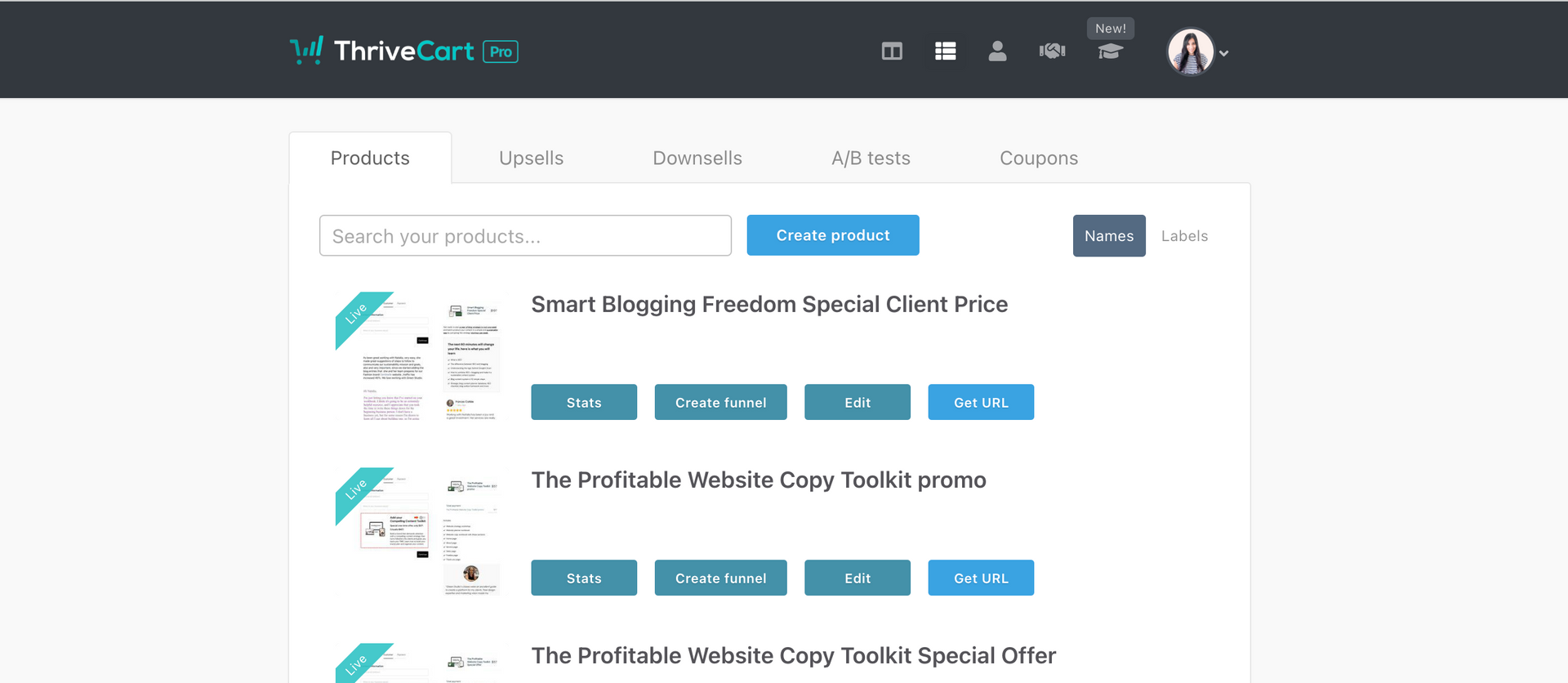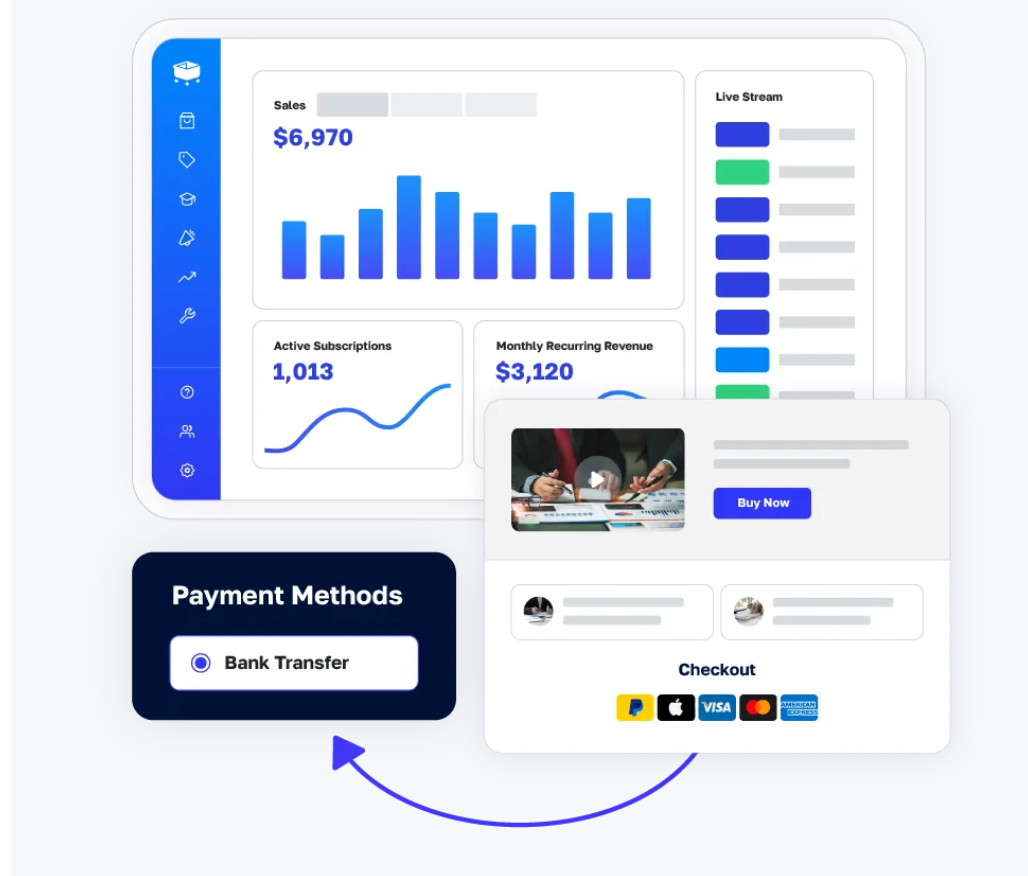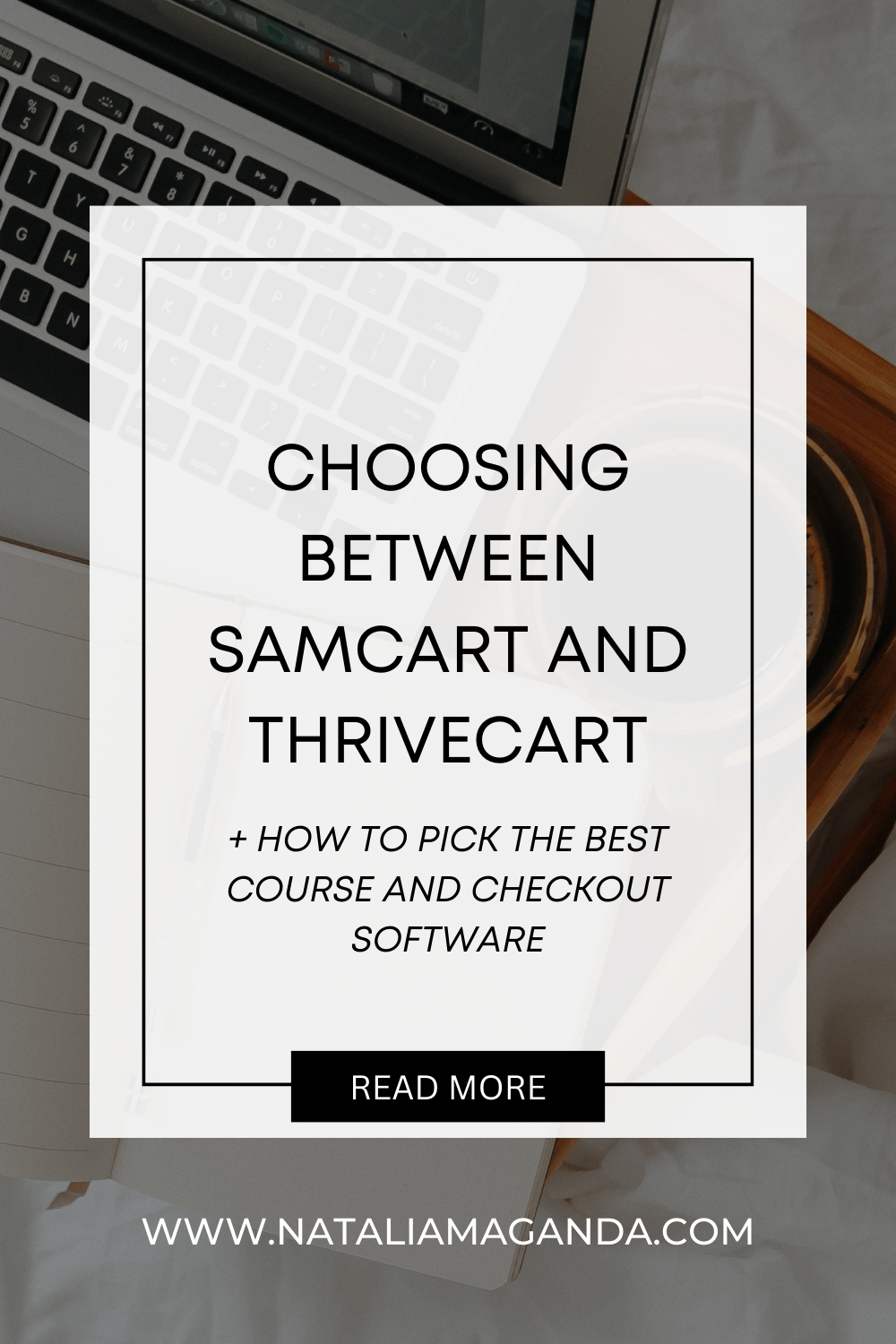ThriveCart vs SamCart which is better in-depth comparison
Selecting the right platform for managing your sales process is essential for any coach or course creator. Let's compare two popular options: ThriveCart and SamCart. Both platforms excel at optimizing the sales funnel, but they have distinct features that cater to different needs. By the end of this comparison, you'll be better equipped to choose the platform that aligns with your business goals.
If we haven't met before, I'm Natalia, the founder of this magical place where we help life coaches and holistic leaders stand out, gain visibility, and simplify their marketing efforts.
Choosing the right platform can make all the difference in managing your business in a cost effective way and without tech headaches.
In this blog post, we'll explore the main pain points surrounding this topic. You want to sell online courses but don't know which platform to choose. Should you go for an all-in-one solution or save some money with ThriveCart?
What exactly is ThriveCart?
ThriveCart
(affiliate link) is a powerful checkout platform designed specifically for entrepreneurs and course creators like you. It offers a wide range of features to help you sell digital products with ease. It features high-converting checkout pages, upsell offers, order bumps, and affiliate programs. ThriveCart Learn also allows you to host your online courses. With a one-time purchase model, it offers a cost-effective solution for businesses looking to scale.

What Exactly is SamCart?
On the other hand, we have SamCart, another popular checkout solution. With its user-friendly interface and robust features, SamCart empowers you to create beautiful sales pages, manage subscriptions, handle order bumps, and integrate seamlessly with other tools in your tech stack.

The main differences between ThriveCart and SamCart and what to consider for making the choice
Now that we know what each platform offers at a high level, let's dive into the main differences between ThriveCart and SamCart:
1. Your website front-end strategy:
If you're looking for complete control over your checkout process and want to customize every aspect of it to match your brand, then ThriveCart shines in this area. On the other hand, if you prefer a simpler approach and want beautifully designed templates without spending too much time on customization, SamCart offers stunning pre-designed themes that will make your sales pages stand out.
2. Your website back-end strategy:
If you're a tech-savvy individual who loves tinkering with advanced settings and enjoys the flexibility of creating complex funnels, ThriveCart's back-end capabilities will leave you thrilled. However, if you prefer a more user-friendly interface that allows you to set up your products and funnels quickly and easily, SamCart's intuitive back-end is designed with simplicity in mind.
3. Monthly and annual costs:
One of the significant advantages of ThriveCart is its one-time purchase option. Pay once, and it's yours for life! This can be a game-changer if you're looking to save money in the long run.
In contrast, SamCart operates on a subscription model, offering different pricing tiers based on your business needs. While this may require ongoing investment, it also provides regular updates and support.
4. The level of automations and integrations you want to have:
With ThriveCart, you have access to a wide range of integrations that allow you to connect with other tools in your tech stack seamlessly. This enables you to automate various aspects of your business, saving you time and effort.
Similarly, SamCart offers robust integrations that ensure smooth communication between different platforms. From email marketing services to membership site, you'll find the right integrations to support your business needs.
Now that we've explored these differences, let's compare the features of ThriveCart and SamCart in this comparison chart:
How much does ThriveCart cost?
ThriveCart
offers a one-time purchase option starting at $495 for their Standard plan and $690 for their Pro plan. These prices may seem steep upfront, but remember, it's a lifetime investment that can save you thousands of dollars in the long run.

How much does SamCart cost?
SamCart operates on a subscription model with three pricing tiers: Launch ($59/month), Grow ($119/month), and Scale ($239/month). Each tier offers different features and benefits tailored to your business needs.
Check here the latest pricing.

Which is better: ThriveCart or SamCart?
Now comes the big question: which platform is better for your coaching or course creator business?
Personally, I prefer ThriveCart for several reasons. First, the one-time purchase option aligns with my long-term goals and allows me to save money in the long run. Second, the extensive customization options, integrations, and automations available with ThriveCart give me the flexibility to create a unique customer experience. I’m not saying this can’t be done withing SamCart but after paying for Kajabi for a year and realizing I can do exactly the same withing ThriveCart and a cheaper email marketing, I prefer tu cut that tech cost and reinvest my tech money on something else.
However, the choice ultimately depends on your specific needs and preferences. Take into account factors such as your website front-end and back-end strategies, monthly and annual costs, level of tech savviness, and desired level of automations and integrations. Consider what will best support your coaching or course creator business in the long run.
Both ThriveCart and SamCart offer powerful checkout solutions
By understanding the differences between these platforms and considering your unique needs, you can make an informed decision that aligns with your long-term goals.
So, are you ready to take your coaching or course creator business to the next level? If you sign up for ThriveCart today you can send me an email and get access to my
Profitable Website Copy Toolkit
for free to help you optimize your website copy and write strategic sales pages that convert.
Related reads:
- ThriveCart vs Kajabi
- ThriveCart vs Clickfunnels
- The best website platforms for coaches
- Dubsado vs Honeybook vs Hello Bonsai vs Moxie
- 22 stress-free business tools for entrepreneurs
- Showit vs Squarespace
- Mailerlite vs Flodesk

* AI Disclosure: This content may contain sections generated with AI with the purpose of providing you with condensed helpful and relevant content, however all personal opinions are 100% human made as well as the blog post structure, outline and key takeaways.
* Affiliate Disclosure: Some of the links on www.nataliamaganda.com may contain affiliate links meaning that I will get a commission for recommending products at no extra cost to you.

hello! i'm natalia
Latina, web design expert for mental health professionals.
I help ambitious life coaches, therapists and holistic leaders amplify their magic, gain visibility, and simplify their marketing efforts through strategic web design and content.











